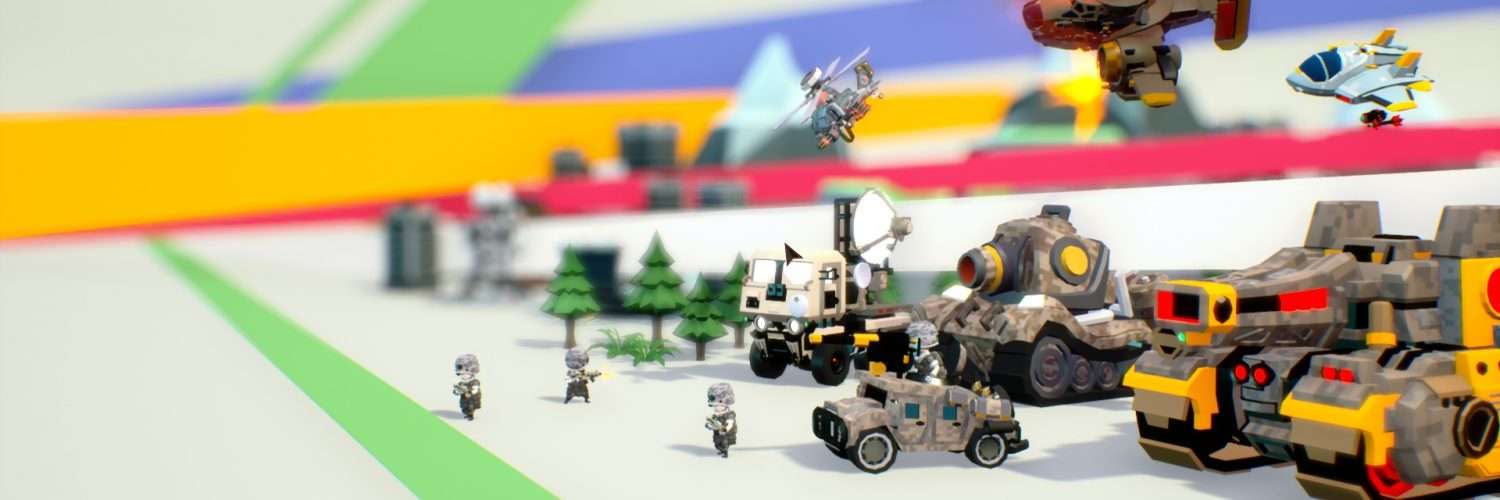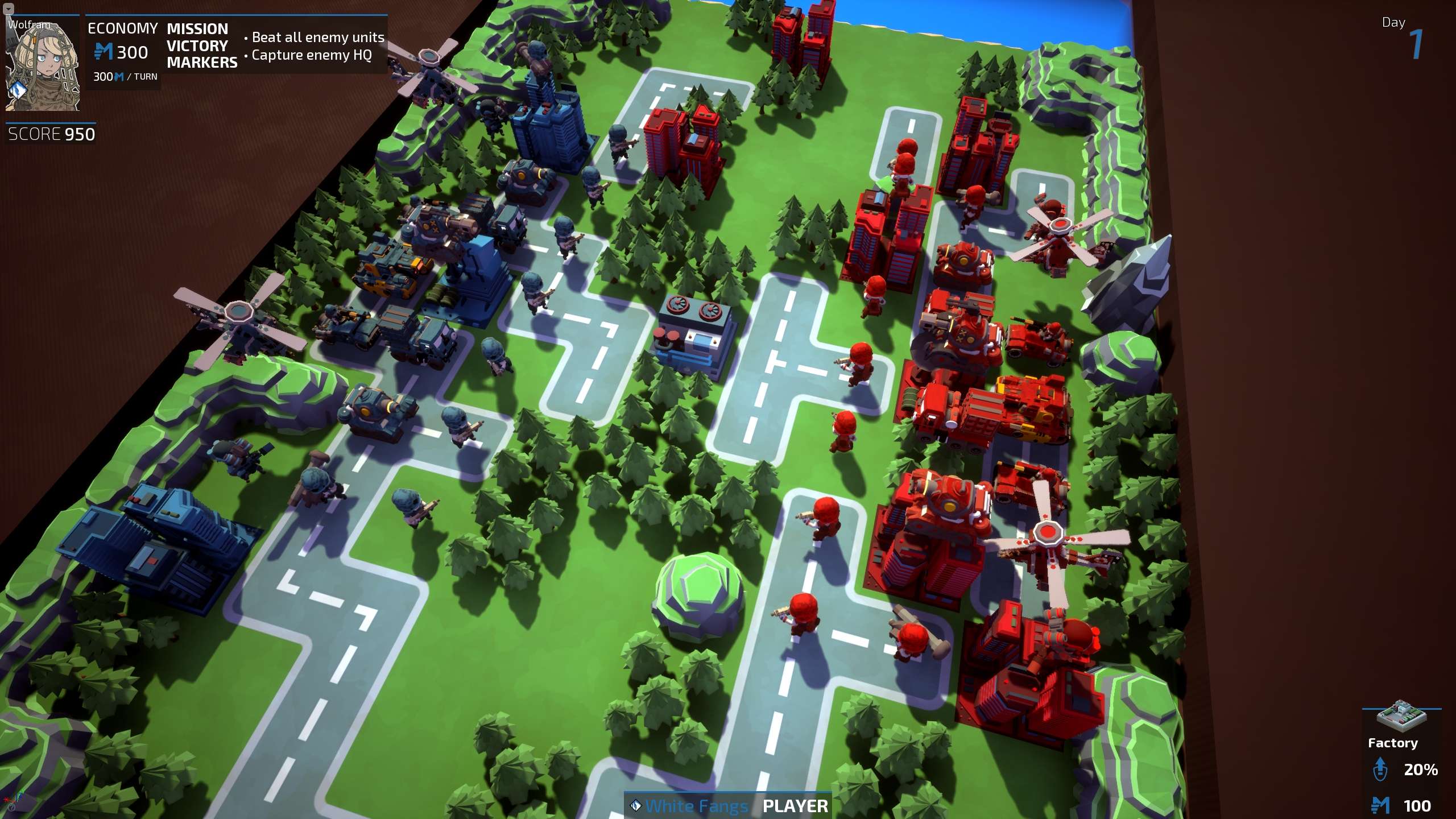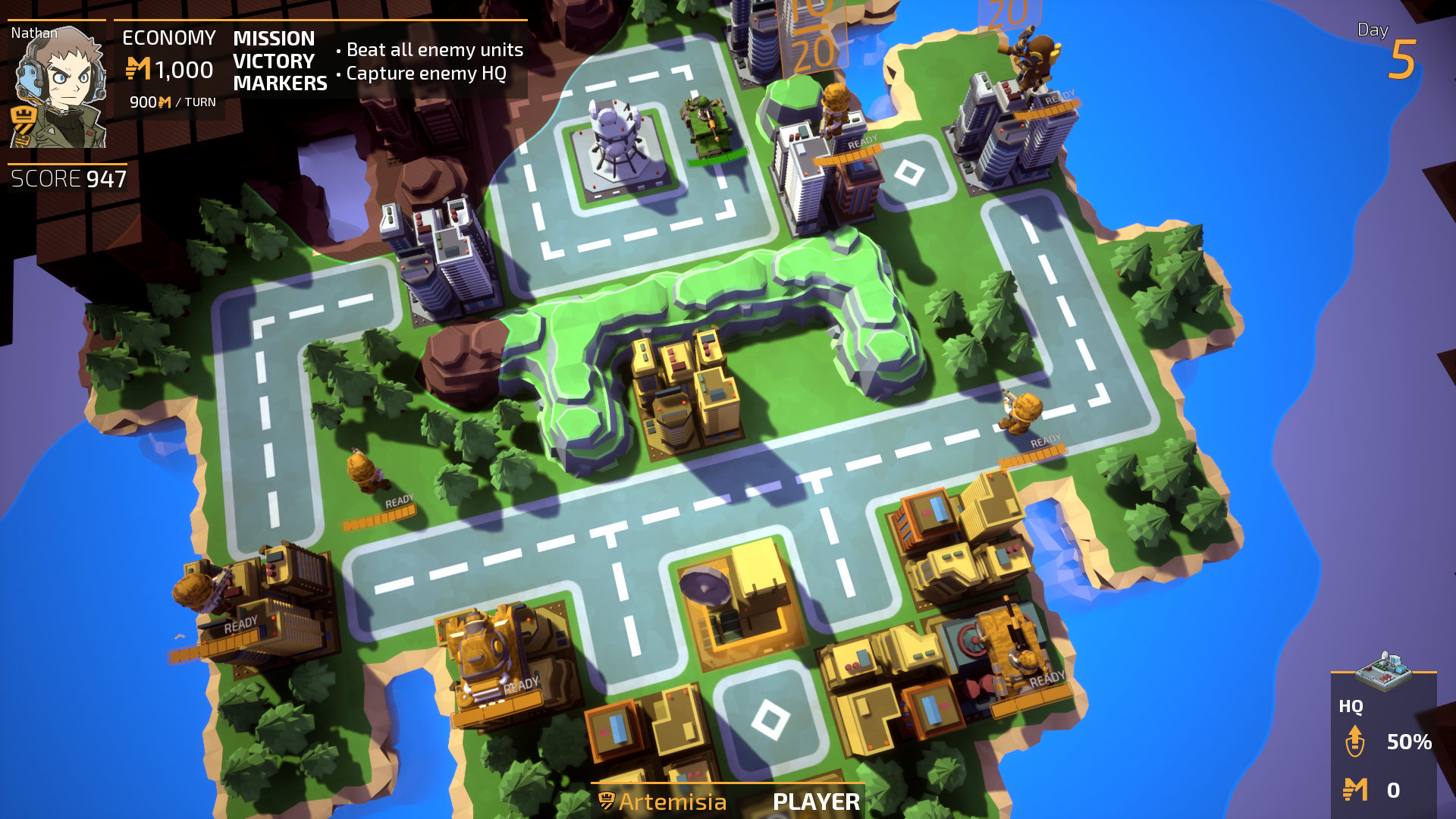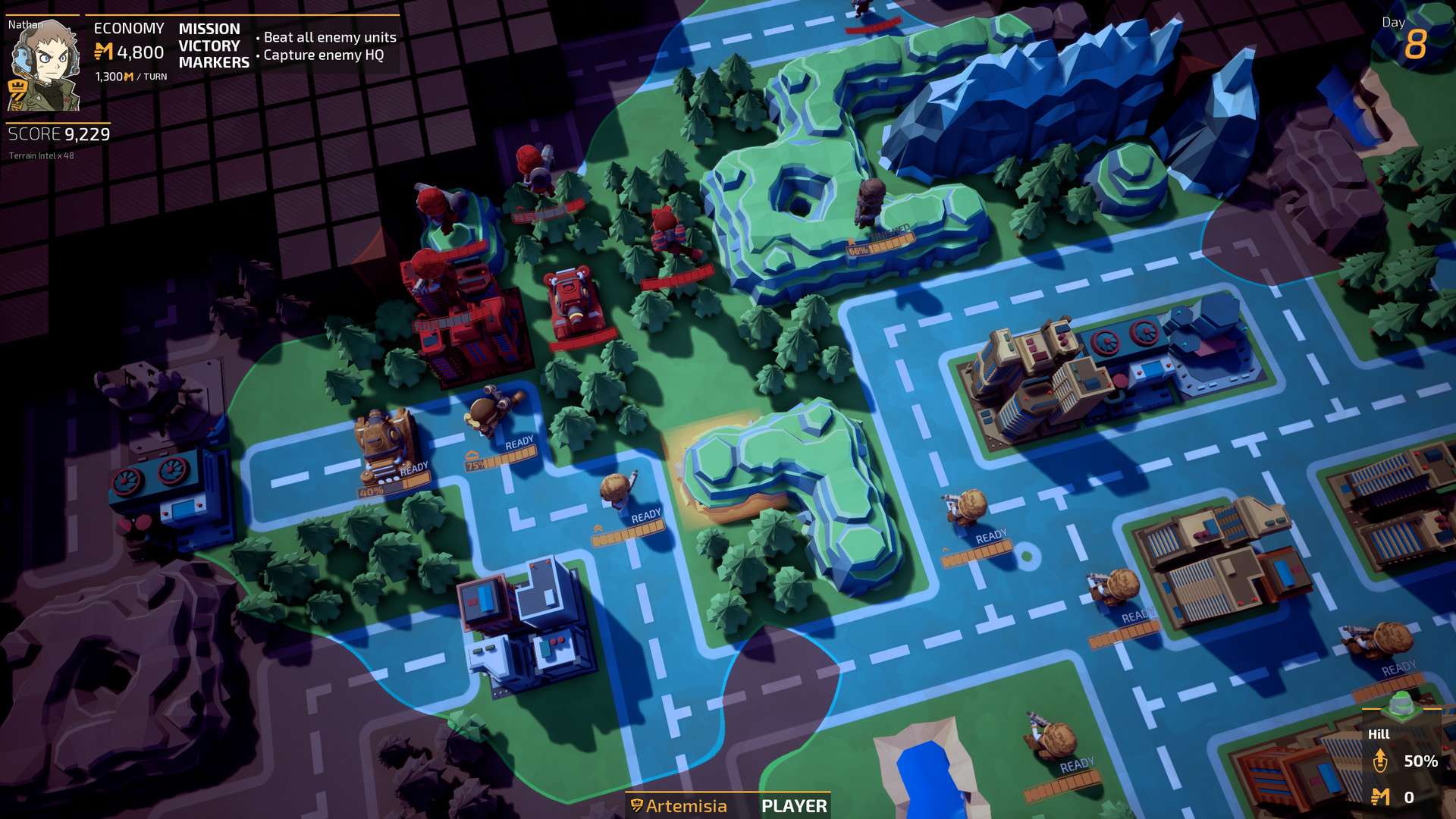
Tiny Metal PC Review
Imitation is the sincerest form of flattery. With an intense focus on emulating Nintendo’s Advance Wars formula Tiny Metal sets it sights on romanticizing away the horrific parts of war by beautifying battlefields with bright primary colours. The end result is adorable to behold for sure. Initial impressions suggest gameplay will match up with the striking presentation as the game begins with the typical ‘Nintenderness‘ you’d expect. Area 35 take care to slowly and kindly guide you through how the game works. Early missions are almost oversimplified to make sure you understand things before you move on. However, in that attempt to move on, the first big negative becomes clear. Tiny Metal forgets to introduce something truly new, or even satisfyingly advance the ideas that came before. This is a problem that persists through the entirety of the game. There is no rollercoaster here, just a long lifeless road. Not even cracks or potholes to dodge. This style of one-note monotone gameplay can only entertain for so long.

It’s fair to say most of Tiny Metal’s suitors will approach the game looking for an Advance Wars like experience. They will get their wish but the game is nowhere near as polished as you’d initially hope. Like all games in the genre you and the AI take turns moving and positioning units on a gridded battlefield. The general with the best tactics will come out on top. There’s a range of different troops with pros and cons; all with a varying range of movement. Some are on foot, some are in tanks. The game suggests positioning matters. For example, if you move to a hill it reveals more terrain. The logic behind the strategy in Tiny Metal is sound but the game never takes advantage of these intricacies.
I quickly realized having a bigger army in Tiny Metal trumps everything else, and is almost a cheat code to easily beat all encounters. Sadly, for almost every mission, it is ridiculously easy to amass a large amount of units. This ultimately made the whole game feel incredibly flat. The AI never pays attention as you capture base after base, amassing limitless supplies, and churning out units to crush their forces in one fell swoop. It happened time after time, mission after mission, unending all the way until the credits rolled. It is heartbreaking that all of Tiny Metal’s flaws are traced back to this one huge flaw. There is even longevity outside the main campaign, with 50 extra skirmish challenges to work through, but the same problems are on show there too.
Even though they share many similarities this is not a total carbon copy of Advance Wars. There are changes, and I think they would be welcomed if the game was stronger as a whole. The most notable of these is a “Focus Fire” command that lets you simultaneously aim many units at one target. Easily wiping out a tile of enemies without giving them a chance to return fire. If they survive they can still only retaliate against one of your units. Then there is “Assault,” which allows you to push back an enemy from a tile before the attack begins. The upside here is the ability to quickly capture buildings, the downside is you lose initiative on that turn, and your opponent gets to fire first. Both are great ideas but not necessary to succeed when you can simply bully the AI into submission.
For a turn-based strategy Tiny Metal never demands much strategy to succeed. Not living up to the name of your own genre is a terrible fault for a game to have.

Narratively the game tries to tell a compelling story. It can be serious at times, which is at odds with the game’s cutesy stylings. Each mission is bookended with multiple minutes of text-filled cutscenes should you need added subtext to go along with the gunplay. The story may be serious, but it is not too exciting. There is a lost war hero and feuding nations to deal with, but regretfully none of the personalities involved are captivating. I feel like the developers knew these cutscenes were a bit on the lengthy side as a Fast-Forward button is always present to skip ahead. I had an urge to press it many, many times. The fact I had to write this review afterwards was the only thing that stopped me. Now that I’ve seen the story I can confidently tell you, if you choose to play Tiny Metal, feel free to press the button. You will not miss much.
Then there are the little problems. I sat down to play the game one night, but not too loud to respect other people asleep. I go to options and turn everything to 0 and go back to the main menu. I decide to get a drink, but when I am away the game’s attract cutscene starts at full volume. This is not a terrible misstep and it’s not the end of the world. I could’ve use headphones of course. It’s more the fact this one small corner of the game had issues, and that made me doubt the other more important areas.

If there’s an Advance Wars shaped void in your life Tiny Metal will fit, but ultimately you’ll find you’re trying to force a square peg into a round hole. Tiny Metal adopts the formula but fails to understand what made the original so successful. When you are playing something special you always know. One game may look very much like another, but can be missing a indistinct something that distances it from its peers. Tiny Metal is missing that ‘something,’ and comes up short in every area when compared directly to Advance Wars.
I don’t often criticize a game for not living up to the standards of another but Tiny Metal tries so hard to mirror Nintendo’s approach I must speak up when I see failings. When you come at the king you better not miss, and Tiny Metal stumbles at every step on its way there. I wanted to love Tiny Metal, I really did, but in the end, as I chipped away at the game, it just made my longing to step back onto the Advance Wars battlefield even stronger. At best Tiny Metal is a rough draft of something that could be great further down the line.
